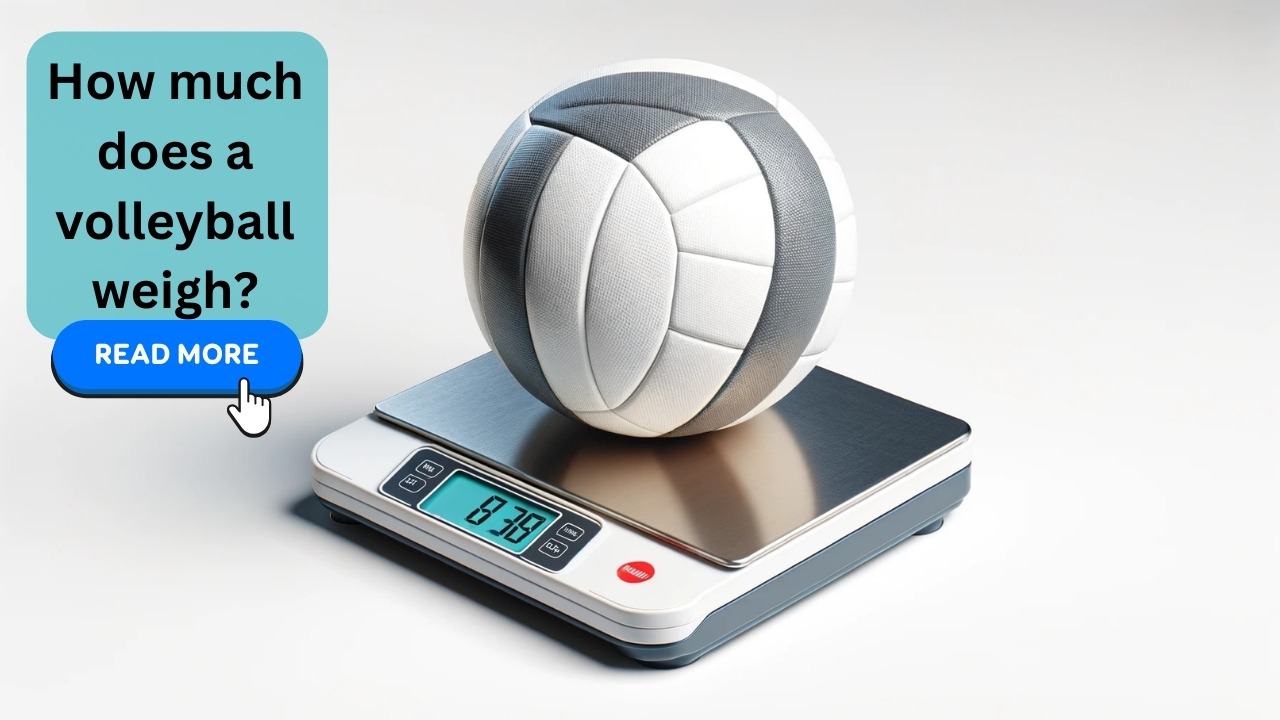Have you ever wondered, “How much does a volleyball weigh?” It’s a question that might seem simple, but there’s a fascinating world behind those few grams that make up a volleyball. Whether you’re a seasoned pro, a weekend beach player, or just curious about this popular sport, understanding the weight of a volleyball can offer insights into the game’s intricacies.
Why the Weight Matters
In volleyball, every element of the ball, from its size to its weight, plays a crucial role in how the game is played. The official ball used in competitions is designed to meet specific standards for optimal performance. So, what’s the magic number? An official volleyball typically weighs around 260 to 280 grams. This weight range ensures the ball is light enough for swift movement, yet heavy enough to maintain control and direction.
The Tale of Two Volleyballs: Indoor vs. Beach

The world of volleyball is divided into two main arenas: indoor volleyball and beach volleyball. Each has its unique ball, known as indoor volleyballs and outdoor volleyballs, respectively. The primary difference? It’s all in the weight and material. Indoor volleyballs are made to be slightly heavier and less impacted by air resistance, while beach volleyballs are lighter and designed to combat the unpredictable nature of outdoor environments.
Regulation Volleyball: Size and Weight Standards

When we talk about a regulation volleyball, we’re referring to a ball that meets the official standards set by governing bodies like FIVB. These official volleyballs are meticulously crafted to ensure they adhere to the specified size and weight requirements. For instance, a regulation volleyball’s circumference should be between 65 and 67 cm, complementing its weight.
Volleyball Ball Composition

The weight of a volleyball isn’t just about numbers; it’s also about its construction. A volleyball ball is made up of a complex layering system, typically consisting of an outer layer, a middle layer of cloth, and an inner rubber bladder. This design ensures the ball maintains its shape and weight throughout intense gameplay.
Beach Volleyball: A Lighter Touch
Beach volleyball brings a different flavor to the sport, and this is reflected in the ball used. Beach volleyballs are designed to be lighter and softer than their indoor counterparts. This design consideration takes into account the outdoor setting, where factors like wind and sun can impact the game.
The Impact of Weight on Gameplay
The weight of a volleyball significantly influences how the game is played. A heavier ball can be harder to hit but offers more control, while a lighter ball can be easier to maneuver but more challenging to direct. Players must adapt their techniques based on the weight and feel of the ball, making weight an essential aspect of their strategic approach.
Choosing the Right Volleyball
For those looking to buy a volleyball, considering the weight is crucial. Whether you’re interested in an official ball for competitive play or a lighter ball for casual beach games, understanding the differences in weight can help you make the best choice for your playing style.
Conclusion
So, how much does a volleyball weigh? It’s more than just a number; it’s a fundamental aspect that shapes the game of volleyball in numerous ways. From the standard 280 grams of an official volleyball to the lighter touch of beach volleyball, the weight plays a pivotal role in every serve, spike, and volley. Understanding this can deepen your appreciation of the sport and enhance your playing experience.
FAQs
An official volleyball typically weighs between 260 and 280 grams, ideal for regulation play.
Indoor volleyballs are slightly heavier for control, while beach volleyballs are lighter for outdoor play.
Yes, both regulation volleyball and official volleyballs adhere to the weight range of 260 to 280 grams.
The size and weight of a volleyball are determined by material composition and intended gameplay environment.
Outdoor volleyballs, especially for beach volleyball, may be lighter than standard, reflecting their specific play conditions.




